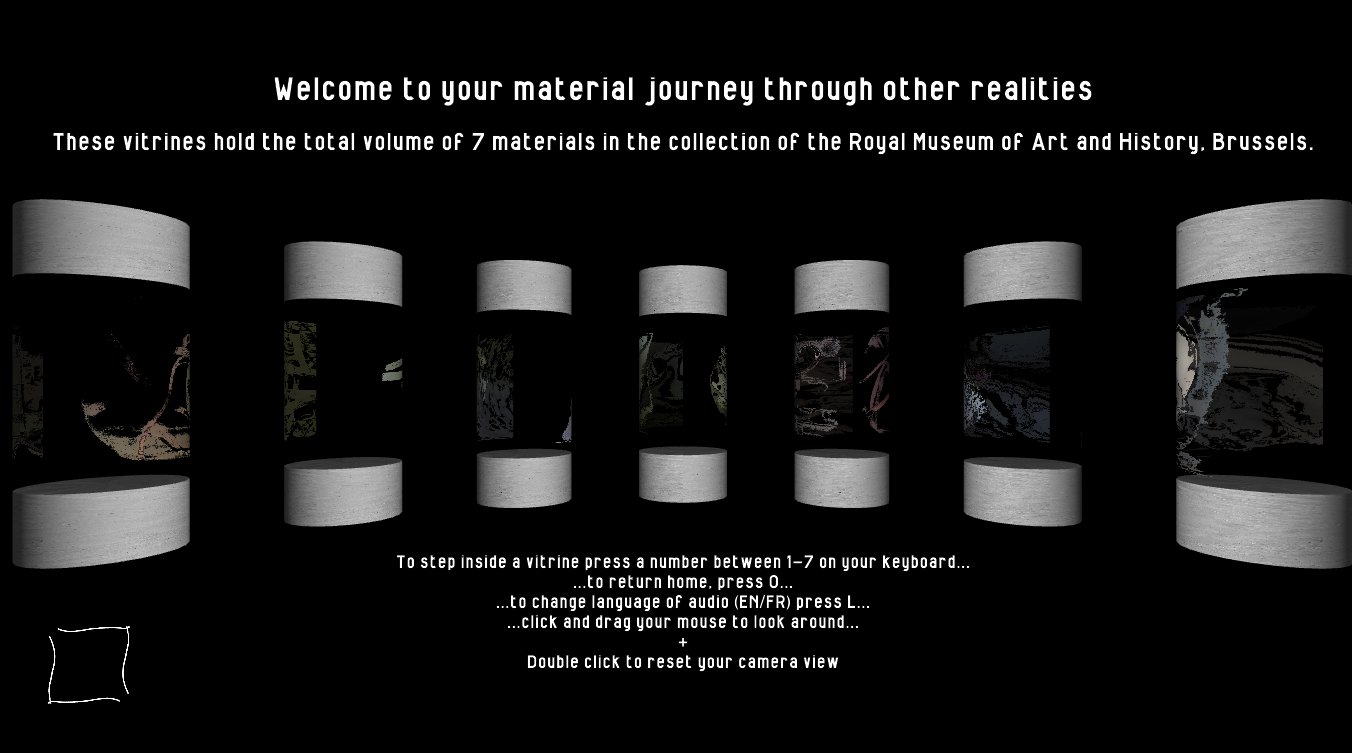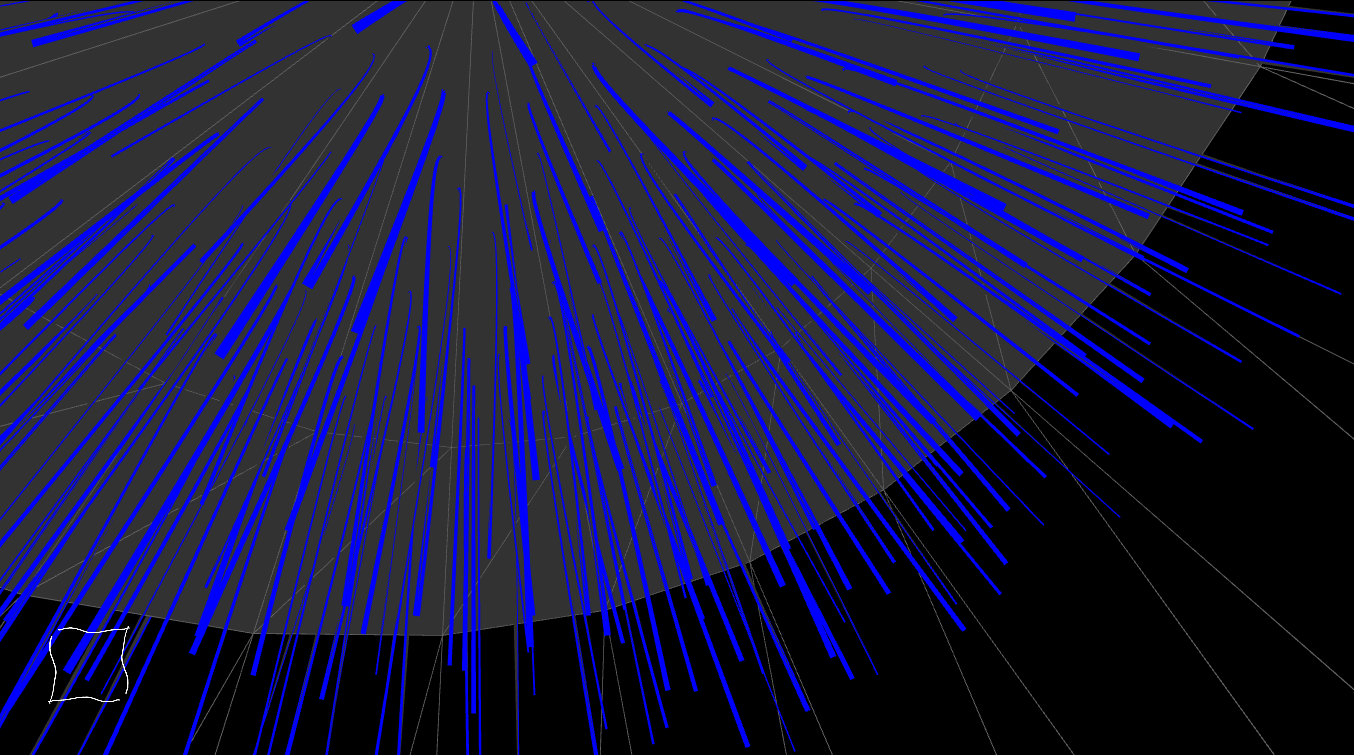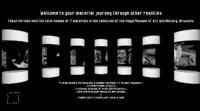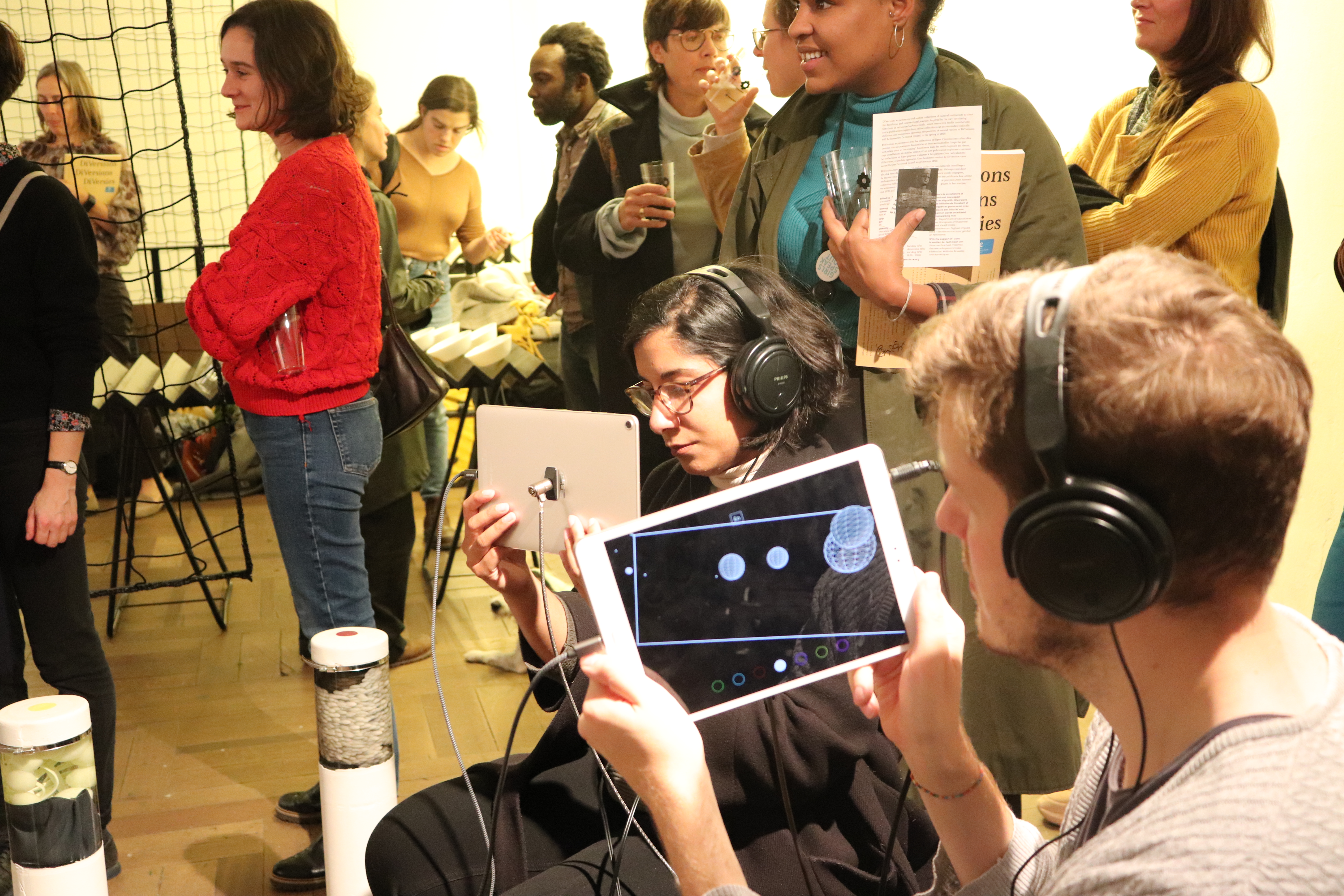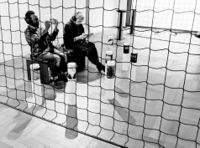Difference between revisions of "Projects:Materiële reizen door Andere Realiteiten"
| (One intermediate revision by the same user not shown) | |||
| Line 20: | Line 20: | ||
</div> | </div> | ||
<div class="project-description"> | <div class="project-description"> | ||
| − | [[file:Material_screenshot01-bw-sharpen.png]] | + | [[file:Material_screenshot01-bw-sharpen.png|2000px]] |
| − | [[file:800px-Material_screenshot02-bw-sharpen.png]] | + | [[file:800px-Material_screenshot02-bw-sharpen.png|2000px]] |
</div> | </div> | ||
</div> | </div> | ||
| Line 34: | Line 34: | ||
</div> | </div> | ||
<div class="project-description"> | <div class="project-description"> | ||
| − | [[file:Material_gallery01-bw-sharpen.JPG]] | + | [[file:Material_gallery01-bw-sharpen.JPG|2000px]] |
| − | [[file:Material_gallery02-bw-sharpen.JPG]] | + | [[file:Material_gallery02-bw-sharpen.JPG|2000px]] |
</div> | </div> | ||
</div> | </div> | ||
| Line 61: | Line 61: | ||
[[File:Mia_phil.mp3]] | [[File:Mia_phil.mp3]] | ||
</div> | </div> | ||
| − | + | '''https://di.versions.space/material-journeys-through-other-realities''' | |
</div> | </div> | ||
<div class="project-description"> | <div class="project-description"> | ||
| Line 68: | Line 68: | ||
[[file:Material_screenshot01-bw-sharpen.png|200px|class=onlyprint]] | [[file:Material_screenshot01-bw-sharpen.png|200px|class=onlyprint]] | ||
[[file:800px-Material_screenshot02-bw-sharpen.png|200px|class=onlyprint]] | [[file:800px-Material_screenshot02-bw-sharpen.png|200px|class=onlyprint]] | ||
| − | + | ||
| − | |||
Stacks and volumes of raw material taken out of place when acquired by a museum collection. Shown in its accumulative, collective form, these vitrines contain outlines of great piles, the mass of its body and your body together. | Stacks and volumes of raw material taken out of place when acquired by a museum collection. Shown in its accumulative, collective form, these vitrines contain outlines of great piles, the mass of its body and your body together. | ||
| Line 134: | Line 133: | ||
[[File:Mia_phil.mp3]] | [[File:Mia_phil.mp3]] | ||
</div> | </div> | ||
| + | '''https://di.versions.space/material-journeys-through-other-realities''' | ||
</div> | </div> | ||
<div class="project-description"> | <div class="project-description"> | ||
| Line 139: | Line 139: | ||
[[file:Material_screenshot02.png|class=onlyscreen]] | [[file:Material_screenshot02.png|class=onlyscreen]] | ||
[[file:Material_screenshot01-bw-sharpen.png|200px|class=onlyprint]] | [[file:Material_screenshot01-bw-sharpen.png|200px|class=onlyprint]] | ||
| − | [[file:800px-Material_screenshot02-bw-sharpen.png|200px|class=onlyprint]] | + | [[file:800px-Material_screenshot02-bw-sharpen.png|200px|class=onlyprint]] |
| − | |||
Grote stapels en volumineuze, ruwe materialen, niet meer op hun plaats vanaf het moment dat ze door een museum werden verworven. In een accumulatieve, collectieve vorm, bevatten deze vitrines de omtrekken van grote hopen en stapels, van de massa van dit lichaam en jouw lichaam samen. | Grote stapels en volumineuze, ruwe materialen, niet meer op hun plaats vanaf het moment dat ze door een museum werden verworven. In een accumulatieve, collectieve vorm, bevatten deze vitrines de omtrekken van grote hopen en stapels, van de massa van dit lichaam en jouw lichaam samen. | ||
| Line 206: | Line 205: | ||
[[File:Mia_phil.mp3]] | [[File:Mia_phil.mp3]] | ||
</div> | </div> | ||
| + | '''https://di.versions.space/material-journeys-through-other-realities''' | ||
</div> | </div> | ||
<div class="project-description"> | <div class="project-description"> | ||
| Line 212: | Line 212: | ||
[[file:Material_screenshot01-bw-sharpen.png|200px|class=onlyprint]] | [[file:Material_screenshot01-bw-sharpen.png|200px|class=onlyprint]] | ||
[[file:800px-Material_screenshot02-bw-sharpen.png|200px|class=onlyprint]] | [[file:800px-Material_screenshot02-bw-sharpen.png|200px|class=onlyprint]] | ||
| − | |||
| − | |||
Empilements et volumes de matière brute ôtés de leur place lors de leur acquisition par une collection muséale. Présentés sous leur forme accumulative et collective, ce sont des contours de grandes piles, la masse de son corps et de votre corps ensemble. | Empilements et volumes de matière brute ôtés de leur place lors de leur acquisition par une collection muséale. Présentés sous leur forme accumulative et collective, ce sont des contours de grandes piles, la masse de son corps et de votre corps ensemble. | ||
Latest revision as of 16:10, 2 December 2020
Material journeys through other realities
Stacks and volumes of raw material taken out of place when acquired by a museum collection. Shown in its accumulative, collective form, these vitrines contain outlines of great piles, the mass of its body and your body together.
Bring your own hair and bones, come sit with us.
We promise to guide you through it.
- Project developed by Mia Melvær and Phil Langley
- Collection: Royal Museums of Art and History (Carmentis)
A close reading by Anne Laforet, October 2020
Material journeys through other realities by Mia Melvær and Phil Langley invites web users to explore a series of seven windows, where they can discover works from the collection of the Brussels Royal Museums of Art and History.
The works they show us differ from the ones we usually get to see in a museum, as they are not depicted based on their definition by the museum, but they are grouped according to their raw materials. Following their searches in the Carmentis database linked to these collections, the artists chose seven types of material, one for each window. The materials were chosen by the artists to reflect different relationships to the objects: objects made by elements of human and animal bodies (hair, fur, bones, to establish a link with the body of the web users), objects made to support and restrain bodies (mostly those of animals), non-identified raw materials (a frequent entry in the Carmentis database), fruit (whose transformation in bowls or musical instruments has altered their usually very short life cycle), coins (whose usage value has disappeared), and human heads (these occur frequently throughout the 2500 years covered by the museum). These materials may seem heterogeneous but they illustrate the different classification modes in a collection.
When entering each window, and thus changing their observation mode, the web users are welcomed by a soundtrack that is addressed directly to them, a poetic audio guide describing the material on display, its volume in the window shared with the body of the web user. Each window is represented in three dimensions, in a very minimalistic way (a few coloured lines on a black background). By moving their mouse, the web users can change their viewpoint inside the window and observe a representation of the materials (for instance, white spheres for the heads, short blue lines for hair). Together with the inverted perspective, the web users entering the object space are experiencing an inversion of the senses in order to approach the object not only through sight but also through their volume, the different smells, the sounds they produce, the textures of the materials on the skin of the web users... The extremely minimalistic 3D rendering enables a memory game, through the senses, more than if actual images of the objects were presented to the web users. This form of evocation questions the way in which objects are represented in databases (photographs, 3D scans, catalogue entries) and opens up new possibilities of interpretation. For instance, the volume of each raw material in the windows of Mia Melvær and Phil Langley’s project is calculated approximatively, based on a quantification of the data in Carmentis. This scale- and mass-based approach reorganises the collection according to the artists’ own terms. Digitalisation transforms the objects in pixels and numbers that can be rearranged differently from the museum’s approach, one that is based on the distinction between objects thanks to taxonomies. On the contrary, the software programmes do not make any distinctions; they gather and aggregate the information based on the queries.
Material journeys through other realities is an invitation to a new spatial relationship between the web user and the museum object, an entry into a completely virtual museum where the objects are present with their own materiality, the result of transcoding operations and a set-up between physical and digital spaces. Mia Melvær and Phil Langley’s creation, at the crossroads of their respective works, enables an incarnation, brought to life by voices and graphics and anchored in imagination, in a way that differs from the museum where the object is on display, with a spectacular, often univocal narrative. With this experimental set-up, web users can create their own relationship to the objects, in a sensual, paradoxical way in relation to their digital and physical materialities.
Materiële reizen door andere realiteiten
Grote stapels en volumineuze, ruwe materialen, niet meer op hun plaats vanaf het moment dat ze door een museum werden verworven. In een accumulatieve, collectieve vorm, bevatten deze vitrines de omtrekken van grote hopen en stapels, van de massa van dit lichaam en jouw lichaam samen.
Breng je eigen haar en botten mee, en kom bij ons zitten.
Wij beloven je er doorheen te loodsen.
- Project ontwikkeld door Mia Melvær en Phil Langley
- Collectie: Koninklijke Musea voor Kunst en Geschiedenis (Carmentis)
Een aandachtige lezing van Anne Laforet, oktober 2020
Materiële reizen door andere realiteiten (Material journeys through other realities) van Mia Melvær en Phil Langley nodigt de internetgebruiker uit om zeven virtuele vitrines binnen te stappen om er in contact te komen met werken uit de collectie van de Koninklijke Musea voor Kunst en Geschiedenis van Brussel.
De werken die ze ons tonen vesrchillen van wat je normaal in een museum aantreft, omdat de objecten niet worden getoond in functie van het hoe het museum ze definieert, maar ze werden verzameld op basis van hun grondstoffen. Na hun onderzoek in de Carmentis-database, die gewijd is aan de collectie, kozen de kunstenaars zeven materialen, één per vitrine. De materialen werden dan weer gekozen in zoverre ze verschillende relaties met de objecten weerspiegelen: voorwerpen gemaakt van elementen van menselijke en dierlijke lichamen (haar, beharing, botten: het legt een link met de lichamen van internetgebruikers), voorwerpen om lichamen (vooral van dieren) in bedwang te houden, niet-geïdentificeerde grondstoffen (een frequente vermelding in de Carmentis-database), fruit (de transformatie van fruit tot kommen of instrumenten is een ingreep in hun doorgaans zeer korte levenscyclus), munten (nu zonder gebruikswaarde), mensenhoofden (zeer aanwezig gedurende de 2500 jaar die de museumcollectie beslaat). Deze materialen lijken misschien heterogeen, maar illustreren de verschillende modaliteiten om een collectie te classificeren.
Bij het betreden van elk vitrine, waardoor ook de manier van kijken verandert, wordt de internetgebruiker begroet door een aan haar of hem geadresseerde en gesproken soundtrack. Het is een poëtische museale audiogids die het aangetroffen materiaal beschrijft, en het volume ervan, dat gedeeld wordt met het lichaam van de internetgebruiker. Elke vitrine wordt zeer rudimentair in drie dimensies weergegeven middels een paar gekleurde lijnen op een zwarte achtergrond. Door de muis te verplaatsen, kan de gebruiker zijn positie binnen het venster veranderen en een afbeelding bekomen van de materialen: een witte bol is bijvoorbeeld een hoofd, korte blauwe lijnen vormen het haar.
Deze omkering van perspectief (met de bezoeker die de ruimte van de objecten betreedt) gaat gepaard met een omkering van de zintuigen om het materiaal te vatten op een niet uitsluitend visuele manier: het volume, de verschillende geuren, het geluid dat geproduceerd wordt, de textuur van de materialen op de huid van de internetgebruiker.
De uiterst minimale 3D-visualisatie maakt een spel rond geheugen mogelijk – via de zintuigen. De ervaring is rijker dan wanneer slechts de afbeeldingen van objecten worden gepresenteerd. Deze vorm van evocatie bevraagt de manier waarop objecten in databases worden weergegeven (foto’s, 3D-scans, catalogusrecords) en opent nieuwe interpretatiemogelijkheden. Zo wordt het volume van de objecten gemaakt in een bepaalde grondstof ruwweg berekend op basis van een kwantificering van gegevens in Carmentis. Dit werk rond schaal en massa reorganiseert de collectie volgens de voorwaarden die de kunstenaars zelf bepalen. Digitalisering transformeert objecten tot pixels en getallen die anders kunnen worden gerangschikt dan museale benaderingen die objecten van elkaar onderscheiden door middel van taxonomieën. Meer zelfs: softwareprogramma’s onderscheiden niets, maar verzamelen en schikken informatie op basis van zoekopdrachten.
Materiële reizen door andere realiteiten nodigt uit om een ongekende ruimtelijke relatie te beleven tussen internetgebruiker en museumobject, en om een volledig virtueel museum binnen te stappen waar objecten aanwezig zijn in hun eigen materialiteit, als gevolg van operaties van transcodering en een indeling tussen fysieke en digitale ruimtes. Het werk van Mia Melvær en Phil Langleys raakt aan aspecten van hun respectieve praktijken als plastisch kunstenaar (Mia) en directeur van een team dat software ontwikkelt voor architectonisch ontwerp (Phil), Het maakt een incarnatie mogelijk die wordt aangereikt door de stem en de grafische interface, en die verankerd wordt door de verbeelding. Dit in tegenstelling tot het museum waar het object in scène wordt gezet en gekaderd door een spectaculair en vaak ondubbelzinnig verhaal. Via dit experiment kan de internetgebruiker zijn eigen relatie tot de objecten creëren, via een sensuele en paradoxale relatie tot hun digitale en fysieke materialiteit.
Voyages matériels à travers d’autres réalités
Empilements et volumes de matière brute ôtés de leur place lors de leur acquisition par une collection muséale. Présentés sous leur forme accumulative et collective, ce sont des contours de grandes piles, la masse de son corps et de votre corps ensemble.
Apportez vos cheveux et vos os, venez vous asseoir avec nous.
Nous vous promettons de vous guider.
- Projet développé par Mia Melvær et Phil Langley
- Collection: Musées royaux d’Art et d’Histoire (Carmentis)
Une lecture attentive par Anne Laforet, octobre 2020
Voyages matériels à travers d’autres réalités (Material journeys through other realities) de Mia Melvær et Phil Langley invite l’internaute à entrer tour à tour dans sept vitrines pour y faire l’expérience d’œuvres de la collection du Musées royaux d’Art et d’Histoire de Bruxelles.
Les œuvres qu’iels nous donnent à voir diffèrent de celles habituellement rencontrées dans un musée car les objets ne sont pas montrés en fonction de la manière dont celui-ci les définit mais rassemblés en fonction de leurs matières premières. Les artistes ont choisi sept matières, une par vitrine, suite à leurs investigations dans la base de données Carmentis dédiée à ces collections. Ces matières ont été choisies par les artistes pour refléter différents rapports aux objets : des objets faits à partir d’éléments de corps d’humains et d’animaux (cheveux, poils, os, afin de faire lien avec les corps des internautes), des objets pour restreindre des corps (surtout ceux des animaux), des matières premières non identifiées (une entrée fréquente dans la base de données Carmentis), des fruits (dont la transformation en bols ou en instruments de musique a modifié leur cycle de vie d’habitude très court), des pièces de monnaie (dont la valeur d’usage a disparu), des têtes humaines (très représentées pendant les 2500 ans que couvre la collection du musée). Ces matières peuvent sembler hétérogènes mais illustrent les diverses modalités de classement d’une collection.
En entrant dans chaque vitrine, en changeant ainsi de mode d’observation, l’internaute est accueilli·e par une bande-son parlée qui lui est adressé·e, un audio-guide muséal poétique qui décrit la matière rencontrée, son volume dans la vitrine qu’elle partage avec le corps de l’internaute. Chaque vitrine est représentée en trois dimensions, de manière très minimale (quelques traits colorés sur fond noir). En bougeant la souris, l’internaute peut changer son point de vue à l’intérieur de la vitrine, et voir une représentation des matières (par exemple, des sphères blanches pour les têtes, des courts traits bleus pour les cheveux).
Ce renversement de perspective, le·a visiteur·se entrant dans l’espace des objets, est accompagné d’un renversement des sens pour appréhender la matière au delà de la seule vue : le volume, les différentes odeurs, le bruit produit, la texture de ces matériaux sur la peau de l’internaute. La visualisation en 3D extrêmement minimale permet un jeu sur la mémoire, par les sens, plus riche que si les images des objets se présenteraient à l’internaute. Cette forme d’évocation interroge la manière dont les objets sont représentés dans les bases de données (photos, scans 3d, notices de catalogue) et ouvre de nouvelles pistes d’interprétation. Ainsi, le volume de chaque matière première dans les vitrines du projet est calculé approximativement à partir d’une quantification des données issues de Carmentis. Ce travail sur l’échelle et la masse réorganise la collection selon des termes propres aux artistes. La numérisation transforme les objets en pixels et en nombres qui peuvent être ré-agencés différemment des approches muséales basées sur la distinction des objets entre eux grâce à des taxinomies. Au contraire, les programmes logiciels ne distinguent rien, mais amassent et agrègent les informations en fonction des requêtes.
Voyages matériels à travers d'autres réalités invite à un rapport spatial inédit entre l’internaute et l’objet muséal, à entrer dans un musée pleinement virtuel où les objets sont présents dans une matérialité propre issue d’opérations de transcodage et d’agencement entre des espaces physique et numérique. La proposition de Mia Melvær et de Phil Langleys touche à des aspects de leurs pratiques respectives, en tant qu’artiste plastique (Mia) et directeur d’une équipe développant des logiciels pour la conception architecturale (Phil), Elle permet une incarnation amenée par la voix et le graphisme, et ancrée par l’imagination autre que celle du musée ; au sein duquel l’objet est mis en scène et en récit de manière spectaculaire et souvent univoque. Avec ce dispositif expérimental, l’internaute peut créer sa propre relation aux objets, dans un rapport sensuel et paradoxal à leurs matérialités autant numériques que physiques.




